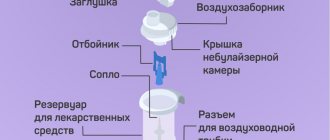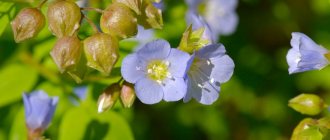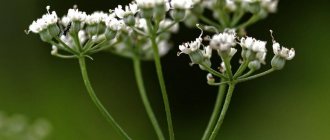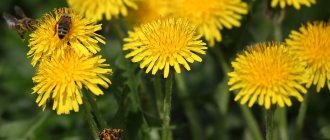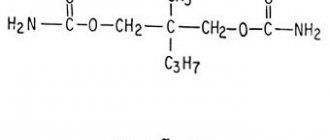Bronchitis Acute bronchitis Chronic bronchitis Exacerbation of chronic bronchitis Obstructive bronchitis Asthmatic bronchitis Allergic bronchitis Smoker's bronchitis Tracheobronchitis Bronchitis without cough Is bronchitis contagious? Symptoms of bronchitis Cough with bronchitis How to distinguish bronchitis from tracheitis How to distinguish bronchitis from pneumonia Signs of bronchitis in an adult without fever Treatment of bronchitis Treatment of acute bronchitis Treatment of chronic bronchitis Treatment of asthmatic bronchitis Treatment of obstructive bronchitis Medicines for bronchitis Antibiotics for bronchitis How to treat bronchitis at home Treatment of bronchitis with folk remedies means Treatment of chronic bronchitis in adults with folk remedies Breathing exercises for bronchitis
Bronchitis is a common disease. It is associated with inflammation of the mucous membrane of the bronchi, cartilaginous tubes connecting the trachea to the pulmonary alveoli. Bronchitis manifests itself as acute and chronic, and today is one of the most common reasons for seeking medical help.
Acute bronchitis
Acute bronchitis is a diffuse (non-segmental) inflammation of the bronchi. It is accompanied by increased bronchial secretion and impaired bronchial patency. Acute bronchitis begins with sharply manifested respiratory symptoms (cough, pain and sore throat, runny nose, fever), and gives pronounced manifestations of intoxication (body aches, fever, weakness and sweating).
Features of the exudate make it possible to diagnose mucous, purulent and catarrhal acute bronchitis. Moreover, the latter are the most common and easiest to treat without complications.
Most often, the cause of acute bronchitis is a viral infection, but bronchitis of bacterial etiology also occurs. Infectious agents most often enter the bronchi by air, and the inflammatory process begins in the nasopharynx.
Sometimes the causative agents of acute bronchitis are chemical impurities in the atmospheric air, dust, too dry air, smoke.
Uncomplicated acute bronchitis can be treated at home with bed rest and giving up bad habits.
Chronical bronchitis
Chronic bronchitis is a progressive inflammatory process in the bronchi. Gradually it leads to changes in the bronchial wall and peribronchial tissue. According to statistics, this disease affects up to 10% of the adult population in Russia. We can talk about chronic bronchitis if, within two years, there are exacerbations of this disease with a duration of up to three months, which are accompanied by a cough with purulent sputum.
Particular causes of the development of chronic bronchitis are inhalation of air with harmful impurities and passive smoking. Also, untreated acute bronchitis can develop into chronic bronchitis.
With chronic bronchitis, the risk of COPD, emphysema, bronchial asthma, cor pulmonale, and lung cancer increases significantly.
Exacerbation of chronic bronchitis
As a rule, exacerbations of chronic bronchitis occur several times a year during the spread of seasonal diseases and are accompanied by a severe cough, sputum production, shortness of breath, and a rise in temperature to 37.5. Exacerbations of chronic bronchitis should not be confused with acute bronchitis.
The main difference is the duration of a productive cough, the presence and quality of sputum (during exacerbation of chronic bronchitis, it usually contains impurities of pus) and the duration of accompanying symptoms in the form of weakness, drowsiness, shortness of breath, which, if the acute phase of chronic bronchitis lasts for a long time, can lead to hospitalization and restoration of respiratory function on a ventilator.
Breathing exercises
Breathing exercises are the main physiotherapeutic procedure shown to help permanently cure chronic bronchitis. It can consist not only of passive breathing exercises, but also involve the whole body.
One of the most famous breathing exercises complexes was developed in the USSR by A.N. Strelnikova and bears her name. For example, it involves the use of arms, legs, tension in the shoulder and abdominal girdle. Due to complex physical activity, tissue respiration is enhanced, the respiratory organs are toned, and a cascade of reactions is launched that stimulate the immune system and improve mood.
In general, for bronchitis in the chronic stage, any moderate physical activity is useful: walking, climbing stairs, exercise, swimming.
Obstructive bronchitis
Obstructive bronchitis is a diffuse inflammation of the bronchi, occurring with increased bronchial spasm and severe damage to pulmonary ventilation.
Acute obstructive bronchitis is caused by infectious pathogens. It is often found in children who often suffer from acute respiratory viral infections, prone to allergies and weakened immunity.
Active and passive smoking, professional activities associated with contact with chemical impurities in the air form a risk group for obstructive bronchitis. Chronic obstructive bronchitis most often affects men.
In addition to a severe cough, a patient with this form of bronchitis has a low-grade fever, headaches and weakness. Visible in the clinical picture of obstructive bronchitis are respiratory disorders. For obstructive bronchitis, a prolonged wheezing exhalation and dry rales, audible without the use of a stethoscope, are typical.
The course of acute obstructive bronchitis lasts from one to three weeks; if symptoms persist for up to two years, they speak of chronic obstructive bronchitis.
Asthmatic bronchitis
Asthmatic bronchitis is a problem in which several factors may combine. One of them may be an infection, and the agent in this case may be pathogenic staphylococcus. Asthmatic bronchitis also occurs from exposure to pollen, dust, animal hair, food allergens, and medications. A hereditary factor cannot be ruled out.
In asthmatic bronchitis, acute phases are followed by periods of remission. In the acute phase, the patient experiences coughing attacks, nasal congestion, rhinitis, sore throat, and body temperature within 37.5. Coughing attacks can be severe, with difficulty breathing, shortness of breath, and whistling when exhaling. After the sputum is discharged, the condition improves. In this case, a cough that worsens may not go away for several weeks.
With frequent exacerbations of asthmatic bronchitis, the risk of developing bronchial asthma increases significantly.
If asthmatic bronchitis is associated with a non-infectious origin, then with a change in lifestyle and complete removal of the allergen, the patient’s condition is restored.
Allergic bronchitis
The cause of the development of allergic bronchitis is allergens that settle on the bronchial mucosa and enter the body with inhaled air. The most common allergens:
- plant pollen,
- animal fur,
- detergents,
- household dust.
Also, allergic bronchitis can be caused by individual allergens, to which the patient has an individual reaction of intolerance.
Allergic bronchitis is, on the one hand, a type of allergy. On the other hand, it is characterized by symptoms of bronchitis - inflammation of the bronchial mucosa.
The main external symptom of allergic bronchitis is attacks of severe coughing, including at night. The temperature may be normal, but general health is characterized by painful weakness.
The cough can be dry and wet, breathing is difficult, and shortness of breath is severe. You can hear wheezing in the bronchi when you inhale (with asthma, wheezing appears when you exhale). In the large and medium bronchi, the inflammatory process, swelling of the bronchial mucosa and narrowing of their mouths are expressed. Against the background of the disease, signs of rhinitis, laryngitis, and tracheitis may appear.
When contacting an allergen, the patient's condition will worsen, so when treating allergic bronchitis, first of all, care must be taken to stop interacting with the allergen.
Smoker's bronchitis
Smoker's bronchitis is a chronic inflammation of the bronchial mucosa due to constant exposure to tobacco smoke. The main symptom is a productive cough for more than 3 months in one year for two years in a row. It is worth noting that in some conclusions of foreign pulmonologists, chronic bronchitis is defined as one of the manifestations of COPD.
The disease is diagnosed on the basis of radiography, CT, and laboratory tests.
Treatment of smoker's bronchitis requires quitting smoking and taking mucolytics and expectorants. During exacerbation of the disease, antibiotics are prescribed.
The main cause of smoker's bronchitis is inhaled tobacco smoke, which contains more than 4,000 components that have a toxic effect on the respiratory system. The intensity of the harmful effects of tobacco smoke depends on the depth of puff, the number of cigarettes smoked per day and the length of smoking.
Chronic bronchitis can be diagnosed in patients who stay in smoky rooms for a long time. Symptoms of the disease develop after 10-15 years of regular inhalation of tobacco smoke (active or passive).
However, not all smokers are equally susceptible to the development of this pathology. Additional risk factors may include:
- working conditions,
- cold climate,
- heredity,
- chronic nasal diseases.
Recurrent bronchitis in a child
However, in some cases, bronchitis in a child becomes recurrent. In such cases, the outpatient tactics of pediatricians, unfortunately, often come down to monthly prescription of antibiotics. I have met parents of children who were given the idea by a certain doctor that their child could not get better without antibiotics. They laughed at the word inhalation and demanded from me another antibiotic for their child, like a dose for a drug addict.
This sad case should alert you if you see that the doctor prefers what he thinks is the easiest way to treat bronchitis in your child, especially if this is not the first bronchitis. In this case, you may need to consult an allergist-immunologist, who will have to collect a very thorough medical history, that is, study the life history of not only the child himself, but also his parents, as well as grandparents at a minimum. Next, it may be necessary to conduct a special allergological examination, since recurrent bronchitis is nothing more than a harbinger of bronchial asthma - already a chronic disease of the bronchi. Let me warn you right away that in a small child we are not always able to carry out the full range of necessary diagnostic procedures, so sometimes the establishment of a final diagnosis is postponed by an allergist-immunologist until an older age, but the doctor can still prescribe preventive anti-relapse treatment, which should help both times to avoid such a diagnosis in the future. In general, based on clinical practice, I can say that even in a child under three years of age, the presence of more than two episodes of obstructive bronchitis is already a reason to consult an allergist-immunologist.
Tracheobronchitis
Tracheobronchitis is a diffuse inflammatory process in the trachea and bronchi. Symptoms of the disease are:
- cough (dry or wet),
- chest pain,
- temperature up to 38 degrees,
- weakness,
- dyspnea.
Depending on the causes of the disease, infectious, allergic and mixed tracheobronchitis are distinguished. Also, tracheobronchitis can be acute and chronic.
Acute tracheobronchitis most often has a viral origin; it most often occurs against the background of seasonal waves of ARVI and influenza, and can become their complications or develop independently when an infectious agent enters the body.
Chronic tracheobronchitis is associated with the constant presence of a causative factor in the body. It can affect smokers and people who spend a lot of time in areas with polluted air. Also, a disease that is not treated in the acute phase can develop into chronic tracheobronchitis.
Those who suffer from diseases of the nasopharynx are at risk of chronic tracheobronchitis.
The development of tracheobronchitis is also influenced by:
- overwork,
- weakened immunity,
- unfavorable climatic conditions,
- smoking.
Changing your lifestyle allows you to get rid of tracheobronchitis and ensure success in treating the disease.
Bronchitis without cough
Bronchitis without cough is an atypical course of the disease, because cough is the main symptom of bronchitis, and its absence indicates that the disease is not proceeding quite “according to the rules.” This reduces the likelihood of timely access to a doctor and significantly complicates the prognosis of the course of the disease.
Coughing is a kind of protective reaction of the body. It is he who eliminates irritants from the respiratory tract. During a cough, mucus and phlegm are removed from the lower respiratory tract, and along with them, pathogens of inflammatory processes.
Bronchitis without cough often occurs at the initial stage of the disease. In this case, the main symptoms of ARVI are present: weakness, fever, muscle aches, runny nose, sore throat. A wet, productive cough may appear a week after the onset of these symptoms.
Also, the absence of a cough can be observed with bronchiolitis, inflammation of the small branches of the bronchi - bronchioles, in which there are no cough receptors. In this case, accumulation of sputum occurs, and therefore this disease can lead to complications.
In acute and chronic bronchitis, there may also be no strong cough. The chronic course of the disease in remission may be accompanied by shortness of breath, fatigue, and a slight cough, especially in the morning. But there is no strong cough or sputum at this time.
Bronchitis without a cough can cause serious complications, oxygen starvation due to difficulty breathing, and problems with the cardiovascular system.
At the same time, bronchitis without a cough is difficult to diagnose, so if you experience weakness, sweating, fatigue, or an increase in temperature to low-grade levels, you need to go to the doctor.
Effective tinctures
In herbal medicine, alcohol tinctures are used to treat chronic bronchitis. Such products should not be used by children, women during pregnancy and breastfeeding.
In case of severe diseases of the liver, kidneys, digestive and cardiovascular systems, the use of alcohol-containing tinctures is permitted only after consultation with a doctor.
Raspberries - 1 kg of ripe berries, pour 1 liter of alcohol, add 400 ml of liquid honey. Leave to infuse for 21 days in a dark and cool place, then take the tincture morning and evening, a dessert spoon.
Aloe - 8 large and fleshy leaves of the plant, pour 1 liter of red wine (preferably homemade). Leave the product in the dark for 4 days, then take a teaspoon of tincture before each meal.
Lilac - pour lilac flowers into a 1 liter glass jar, fill to the very brim with vodka and place in a dark and warm place for 3 weeks. Take 20 drops of lilac alcohol tincture every evening, a few hours before bedtime. The first positive results can be noticed within 2-3 days from the start of use.
Is bronchitis contagious?
Bronchitis can be contagious if it is caused by infectious agents. If they enter the body, a disease may develop, and the risk of this increases if:
- the presence of foci of infection in the upper respiratory tract,
- chronic diseases (COPD, diabetes, AIDS),
- smoking and alcoholism,
- cold climate,
- high air pollution.
Also, the risk of developing infection is higher in children under 2 years of age and in those over 65 years of age.
The possibility of developing bronchitis when exposed to an infectious agent depends on the state of immunity and the contagiousness of the pathogen. The weaker the immune system and the more contagious the virus, the higher the chances of getting sick.
Infection occurs through airborne droplets and through hands if hygiene rules are not followed. When infected, the mucous membranes of the nasal passages are affected, after which the infection “descends” to the lower parts of the respiratory system and affects the bronchi.
With strong immunity and the absence of risk factors, infection may not develop into a disease, and the infectious agent will not penetrate the bronchi, causing milder and short-term respiratory symptoms in the upper respiratory tract.
How to prevent the disease?
Bronchitis is often a complication of acute respiratory viral infection, so it is important to promptly treat an acute respiratory infection in order to prevent complications in the form of bronchitis. Lifestyle modification is one of the main ways to prevent bronchitis. To prevent illness, you need to:
- Stop smoking;
- Apply preventive measures during seasonal outbreaks of morbidity;
- Eat nutritiously and properly;
- Correctly treat a cold;
- Use means to increase local immunity2.
Local immunity can and should be helped!
To increase the resilience of your body, you need to take into account all the recommendations and adhere to them in your daily life.
Symptoms of bronchitis
Bronchitis has very specific symptoms with clear signs of damage to the respiratory tract. Acute bronchitis is often preceded by symptoms of ARVI - runny nose, sore throat, nasal congestion. Intoxication in acute bronchitis is indicated by sweating, headache, chills, increased body temperature, pain in the muscles of the back, arms and legs.
In this case, the main symptom, a kind of “calling card” of bronchitis, is attacks of “barking” cough, accompanied by discomfort in the chest. Over time, coughing attacks may be accompanied by pain in the diaphragm area. When you cough, thick sputum is released; over time, it changes structure and comes off easier during the healing process.
When the inflammatory process moves from the bronchi to the bronchioles, breathing is significantly impaired and obstructive syndrome develops. Inflammation of the bronchioles (bronchiolitis) is accompanied by a painful cough with scanty sputum, severe shortness of breath, pallor and symptoms of hypercapnia - lethargy and drowsiness, low blood pressure and tachycardia.
Cough with bronchitis
Cough with bronchitis is frequent, ranging from moderate intensity to debilitating and constant. The most unpleasant and active is a suffocating cough. It can last up to several hours with short breaks, the attack ends with a small amount of sputum, sometimes mixed with blood due to microcracks in the mucous membrane, vomiting and extreme fatigue. A wet or productive cough produces a significant amount of sputum; at high intensity, it can also be accompanied by gagging. Chest pain - often accompanies a cough with bronchitis, it goes away after sputum separation. A lingering cough can last for several weeks, it is unproductive, is not accompanied by pain and can be successfully treated with systemic treatment, including folk remedies.
It is important to remember that during attacks of intense coughing, it is necessary to take a lying position as little as possible, sleep half-sitting, and regularly measure pulse rate, pressure and saturation indicators. In the room where a person is undergoing treatment, regular wet cleaning and ventilation are necessary to remove dust and ensure sufficient oxygen.
How to distinguish bronchitis from tracheitis
Cough is a symptom that is characteristic of many diseases, from common colds to cancer problems. Therefore, when diagnosing, it is important to understand what the cough is associated with, what its causes are and the prospects for treatment. At the same time, therapy for a number of diseases has certain common features, but also has very important differences. In other words, thinking that most diseases of the respiratory system are “almost the same” is definitely not worth it.
Most often, the origin of both bronchitis and tracheitis is associated with viruses and bacteria. Viruses enter the upper respiratory tract along with the air. If viruses enter the nasopharynx, a runny nose and sore throat begin, and if they enter the trachea, a cough occurs. The trachea becomes inflamed. Bronchitis is often a consequence of tracheitis, bacterial complications and the spread of infection in the respiratory tract.
At the onset of the disease, the symptoms of bronchitis and tracheitis are common. These are fever, headache, sore throat. And, of course, cough, which at first glance is no different for these diseases. But it is the specificity of the cough that makes it possible to distinguish inflammation of the bronchi from inflammation of the trachea. The trachea has few glandular cells that produce mucus. With tracheitis, the cough is usually dry with very little sputum. With bronchitis, a productive cough develops after 2-3 days, and the sputum can be very intense. The cough with both diagnoses can be very severe.
For tracheitis, bronchitis and tracheobronchitis, treatment can only be prescribed by a doctor, but it is important to remember that self-prescribing cough medications can cause serious complications. With the same focus (getting rid of cough), medications for wet and dry coughs work differently, and illegibility can provoke either severe coughing attacks up to hours of vomiting, or suppression of the cough center, stagnation of sputum and complications in the form of pneumonia or the transition of the disease to chronic form.
How to distinguish bronchitis from pneumonia
The main difference between bronchitis and pneumonia is the focus of inflammation. At the same time, missed time to treat bronchitis can cause the development of pneumonia. The unfavorable course of bronchitis can be determined by the state of the sputum; it acquires a pronounced mucopurulent consistency.
It is absolutely impossible to try to diagnose bronchitis and distinguish it from pneumonia on your own; this can lead to very serious consequences. But it’s still worth knowing the differences. So, with bronchitis, the patient feels pain in the chest during coughing attacks. The nature of the pain is annoying, there is a sensation of irritation of the bronchi from the removal of phlegm. With pneumonia, the chest hurts when you take a deep breath. Sore throat and hoarseness are also more common in bronchitis. Patients with pneumonia often have increased pallor of the skin associated with severe oxygen deprivation. Severe weakness, severe lack of appetite, sudden increase in temperature are signs of intoxication associated with the development of pneumonia.
Diagnosis primarily occurs through auscultation of the lungs; the doctor determines noises in the respiratory system. Bronchitis is accompanied by dry wheezing with whistling when inhaling and exhaling. With pneumonia, wheezing is more like a creaking sound. After auscultation, the doctor may prescribe a laboratory sputum test to determine the pathogen and a chest x-ray for an accurate diagnosis.
Signs of bronchitis in an adult without fever
Bronchitis without fever may be associated with the patient’s weakened immune system, an atypical course of the disease, or its initial stage. In this case, the disease makes itself felt by coughing and general weakness.
The likelihood of fever during bronchitis depends on the type of disease. So, with obstructive bronchitis and a weakened immune system, there may be no temperature. Chronic bronchitis in the acute phase, asthmatic bronchitis against the background of an allergic reaction can also occur at low-grade or normal temperature.
Acute bronchitis is most often the result of a viral infection, and during its course, fever is a persistent symptom.
Bronchitis without fever turns out to be dangerous due to delays in seeking medical help. Therefore, it is worth paying attention even to morning cough, weakness and headaches, signs of oxygen deficiency and the state of sputum, even if it is insignificant. If you suspect a disease, even at a normal temperature, you should consult a doctor.
Colds and ARVI
Common apricot
Apricot fruits are mainly used, but in folk medicine in Southeast Asia, apricot seeds are used as a soothing remedy for coughs. However, the internal use of apricot seeds requires caution, since in large quantities they can cause poisoning.
Dry apricot fruits are recommended as an expectorant for coughs. Fresh fruits are useful for exhausted, anemic patients.
Recipe:
For bronchitis, colds, coughs, and difficulty breathing, the following recipe is recommended: equal amounts (by weight) of apricot and peach seeds are ground into powder, then a pill mass is prepared in a flour paste, from which small pills are prepared; Take 10 pieces along with ginger decoction.
Article on the topic
What is autumn - it's snot. Diseases that bad weather brings with it
Fluffy birch
Buds and leaves are used. Birch buds are collected in winter or early spring, when they have not yet blossomed, during the swelling period. The leaves are collected during flowering.
In modern medicine, the buds of the plant are used as a disinfectant and expectorant for tracheitis and sore throat.
Birch bud preparations in large doses have an irritating effect on kidney tissue.
Recipe:
An infusion of birch buds is prepared at the rate of 2 teaspoons of raw material per 1 glass of boiled water; Take in three doses 20–40 minutes before meals.
Swamp cranberry
The fruits and cranberry juice are mainly used for medicinal purposes.
The juice has a bactericidal effect against staphylococcal and streptococcal infections. It is often taken with honey or sugar, diluted with water for colds and feverish conditions. Fruit pomace (pulp) is used externally as an anti-inflammatory agent. Cranberry leaves and shoots in the form of a decoction are used to treat headaches. Cranberry fruits are contraindicated for peptic ulcers of the stomach and duodenum.
Recipe:
Fruit juice is prepared from fruit juice, while the fruit squeeze is filled with water at the rate of 100 g of fruit per 3/4 liter of water; boil, filter, add the previously obtained raw juice and sugar to taste. Fruit juice is prepared for 2-3 days and stored in a cool place.
Paracetamol and company. What medications help with colds Read more
Common raspberry
Berries and, less often, flowers and leaves are harvested. The fruits are collected in dry weather.
Raspberries have diaphoretic, antiseptic, antipyretic and anti-inflammatory effects.
Raspberries are used as a diaphoretic and vitamin remedy for acute respiratory diseases. Raspberries are used fresh, dried and frozen, as well as in the form of collections and teas. There is information in the literature about the use of raspberry rhizomes for bronchial asthma.
Recipe:
The infusion is prepared at the rate of 2–3 tbsp. spoons of berries (leaves or flowers) per 2 cups of boiled water (daily dose).
Article on the topic
They treat a cold by causing a stroke. What kind of drugs carry this danger?
Real lavender
Inflorescences are used, which are cut 1–1.5 weeks after the start of flowering.
Infusion of flowers treats inflammation of the middle ear (otitis media). Mixed with chamomile flowers, lavender is recommended for hoarseness and bronchitis.
Recipes:
An infusion of flowers is prepared at the rate of 3 teaspoons of crushed flowers per 2 cups of boiled water; taken during the day.
A decoction of chamomile and lavender flowers is prepared at the rate of 20 g of plant material per glass (200 ml) of boiled water; take 1 tbsp. spoon 3 times a day.
Large plantain
The medicinal raw material is plantain leaves, which are collected throughout the summer.
Plantain preparations have an anti-inflammatory, enveloping, expectorant and emollient effect, and help thin sputum. In the experiment, plantain juice suppressed the growth of pathogenic staphylococcus and delayed the growth of hemolytic streptococcus. Plantain preparations are contraindicated for gastritis with high acidity of gastric juice.
Recipe:
The infusion is prepared at the rate of 3 tbsp. spoons of crushed leaves in 2 cups of boiled water (daily dose); take ½–²⁄3 glasses of infusion 3 times a day 20–30 minutes before meals.
Immunity on the spice shelf. 8 useful spices during colds Read more
Licorice naked
The medicinal raw materials are the roots, which are harvested from March to November.
Plant preparations have an anti-inflammatory, antiviral effect, thin sputum, promote easier expectoration, and at the same time sanitize the respiratory system.
Licorice preparations in modern medicine are used for coughs, inflammation of the catarrhal respiratory tract, and bronchial asthma. Licorice root is included in breast preparations. Long-term use is contraindicated during pregnancy. Plant preparations increase blood pressure, delay the removal of fluid from the body, disrupting the electrolyte balance, causing swelling and weakening of potency.
Recipes:
The infusion is prepared at the rate of 10 g (1 tablespoon) of crushed roots per 1 glass of boiling water; take 1 tbsp. spoon 3-4 times a day.
Breast (licorice) elixir, which contains ammonia solution, anise oil, licorice extract, alcohol and water, is used as an expectorant - 20-40 drops several times a day. Children are prescribed as many drops as they are old.
Article on the topic
They treated - they didn’t treat. How not to get a cold
Rosehip May
Rose hips are harvested in August–October.
Rosehip preparations are a multivitamin. Rosehip increases the body's resistance to infectious and colds.
In folk medicine, the plant is used to treat hypovitaminosis, and also as a general tonic, adaptogenic agent for infectious diseases. An infusion of the fruit is prescribed for colds and headaches. After ingesting rosehip infusion, be sure to rinse your mouth with warm water or a soda solution. The acids contained in the infusion corrode tooth enamel.
Recipe:
An infusion of fruits is prepared at the rate of 2 tbsp. spoons of fruit in 2 cups of boiled water (daily dose); Take 3 times a day 30–40 minutes before meals.
Treatment of bronchitis
Treatment of bronchitis depends on the stage of the disease and what type of bronchitis the patient is experiencing. In any case, bronchitis should be treated fully and comprehensively, and if necessary, change your lifestyle. Despite its prevalence, bronchitis is not a harmless disease, dangerous due to serious complications, so self-medication and an unhealthy lifestyle when the bronchi are affected can cause severe harm to health.
Treatment of acute bronchitis
Treatment of acute bronchitis without complications is carried out on an outpatient basis. The patient is prescribed to give up smoking and alcohol, drink plenty of warm water, ventilate the room, and eat a diet limited in fast carbohydrates.
For a dry cough, antitussives are prescribed. To facilitate sputum discharge, mucolytics are prescribed orally or by inhalation.
If acute bronchitis is viral in nature, antibiotic treatment is not prescribed. Antibiotics are included in the treatment protocol when a bacterial component is attached, in which case antibacterial therapy is prescribed. Antibiotics for the treatment of acute bronchitis can be prescribed orally or by injection. At temperatures above 38, drugs based on paracetamol or ibuprofen are prescribed.
Treatment of chronic bronchitis
In the treatment of chronic bronchitis, the result is not always quick and completely successful. But it is possible and necessary to stop the development of the disease and reduce the likelihood of its exacerbations. To achieve results, expectorants, bronchodilators, physiotherapy, inhalations, anti-inflammatory and antihistamines are used. And in case of chronic bronchitis, it is extremely important to change your lifestyle, get into a state of health, forgetting about bad habits, get enough sleep, keep places to work and live clean, exercise your body moderately physically and eat right.
Treatment of asthmatic bronchitis
In the acute form of asthmatic bronchitis, symptomatic treatment is prescribed; the “leaders” of the list of medications include expectorants to remove mucus and bronchodilators, inhalations to cleanse the bronchi. This type of bronchitis is almost always treated with antihistamines. In chronic bronchitis with an asthmatic component, antibiotics may be required in the acute stage.
Breathing exercises, physiotherapy, massage are useful. Fresh air is very important, especially sea and pine air.
Treatment of obstructive bronchitis
For acute obstructive bronchitis, antiviral therapy is performed with interferon or ribavirin. Antispasmodics (for example, papaverine), mucolytics and bronchodilators are also used. Massage and breathing exercises are recommended to facilitate mucus discharge.
Diagnostics
For a doctor, diagnosing acute or chronic bronchitis is not particularly difficult. The doctor will find out your complaints and medical history (most often bronchitis is a consequence of an advanced cold). Additional studies include chest radiography and a clinical blood test. A bacteriological examination of sputum and determination of the sensitivity of microorganisms to antibiotics are also carried out. These methods are sufficient to make an accurate diagnosis and prescribe treatment.
Medicines for bronchitis
It is important to remember that for the best result, the treatment protocol for bronchitis must be prescribed by a doctor. The group of drugs prescribed for this disease may include antibiotics (for antibacterial therapy), bronchodilators (they relieve spasms from the bronchial muscles), mucolytics (they facilitate coughing up sputum). Sometimes treatment includes antihistamines, antipyretics for temperatures above 38 and antispasmodics.
Antibiotics for bronchitis
Antibiotics are prescribed when there is a possibility of developing a bacterial infection. In these cases, the disease is severe, with frequent attacks of shortness of breath, severe cough, high fever, and severe intoxication. The severe course of the disease is expressed by an increase in ESR and leukocytes in the general blood test.
Antibiotics are prescribed individually, focusing on one of the following groups of drugs.
Aminopenicillins destroy bacteria by destroying the structure of their cells; they are quite easily tolerated by the body. These include Amoxiclav, Ecoclave, Flemoxin Solutab. Macrolides penetrate into the bacterium, destroy its protein synthesis, and it loses its ability to reproduce and grow. Among the well-known drugs in this group are Azithromycin, Sumamed, Erythromycin. Fluoroquinolones act through the destruction of bacterial DNA, and these include Levofloxacin, Cifran, Ofloxacin. Tetracyclines disrupt the life of bacteria; they are broad-spectrum antibiotics, but they have many side effects. These include Tetracycline, Doxycycline, Tigacil.
How to treat bronchitis at home
In most cases, bronchitis is treated at home. There are rules to ensure the most positive result when treating bronchitis at home.
In case of acute bronchitis with fever, it is necessary to observe bed rest, diet and plenty of warm drinks. A complete ban on active and passive smoking and alcohol is being introduced. When the temperature normalizes, compresses on the chest area, mustard plasters, massage, and breathing exercises are recommended.
It is very important to keep the room where the patient is in order, carry out wet cleaning daily, regularly ventilate and, if possible, maintain normal air humidity. And, of course, it is necessary to take medications according to the doctor’s treatment protocol.
At home, uncomplicated acute bronchitis resolves within two weeks. The final normalization of external respiration functions and bronchial patency occurs within one and a half to two months.
Treatment of bronchitis with folk remedies
Treatment of bronchitis with folk remedies can only be carried out in conjunction with medical treatment with mandatory consultation with a doctor. When using folk remedies, it is important to remember that they can be very effective, and if treated unreasonably, they can cause harm, including burns, severe allergies, and eating disorders.
Folk remedies for the treatment of bronchitis are traditionally prepared at home. Among them are those that are taken orally (mixtures or drinks) and compresses. You need to be careful with both of them, since the ingredients of anti-bronchitis products cannot be called mild in their effect on the skin, taste and smell. All these are active substances, certain allergens and products with which it is better not to overdo it.
The top leaders in folk remedies for the treatment of bronchitis include honey, lemon, black radish, horseradish, onion, mustard, propolis, and ginger.
Treatment of chronic bronchitis in adults with folk remedies
The best folk remedies for chronic bronchitis are a healthy lifestyle, proper nutrition and caring for yourself during the cold season. At the same time, if an exacerbation does occur, it is important to know what means help and use time-tested ones.
A very popular drug for the treatment of bronchitis is a preparation that contains honey, lemon and glycerin. It is especially recommended for dry coughs, so those who do not suffer from allergies can try its effectiveness. Preparing medicine is not difficult. You need to take a lemon, make through holes in it and cook for 5 minutes. The juice is squeezed out of the cooled lemon (the more thoroughly, the better), two tablespoons of glycerin and three tablespoons of honey are added to it. Three hours in the refrigerator, and you can take it. Adults - 1 tablespoon before meals, children - 1 teaspoon.
Propolis-based products are excellent for bronchitis. You need to take 10 g of propolis, 100 g of butter and the same amount of honey. Grind the propolis and heat the oil. Mix everything with honey. 15 minutes and the medicine is ready. It should be added to a warm drink, one teaspoon at a time, and drunk three times a day.
A classic folk remedy for bronchitis is black radish juice. It has a powerful mucolytic effect and relieves barking dry cough well. Easy to cook. We cut off the top of the radish, make a “cup”, but do not use the pulp. Place a spoonful of honey in a radish “cup” and leave overnight. The resulting juice is a powerful medicine. For adults, it is enough to take 4 tablespoons per day, for children - 4 teaspoons.
A time-tested compress - butter, animal fat (pork, goat, badger lard), mustard powder and vodka. Take three tablespoons of everything, heat it up and cool it down. The relatively soft mass is wrapped in gauze, applied to the back to the left and right of the spine and left overnight. Warming up again, the compress can be used several times.
The easiest and least troublesome way to prepare a folk remedy for bronchitis is to squeeze the juice. For example, cabbage juice and lingonberry juice have an expectorant effect, thinning mucus in the bronchi. Symptoms of a severe cough can be relieved by carrot juice.
Bronchial asthma
Black elderberry
Inflorescences are prepared and cut with knives or pruning shears. Breaking off branches when collecting flowers is unacceptable, as this leads to the destruction of the thickets.
Black elderberry flowers have diaphoretic and anti-inflammatory properties. In addition, the plant has a mild expectorant effect. Elderberry infusions are used for bronchial asthma, colds, bronchitis, flu, and sore throat. Substances isolated from the plant exhibit antiviral activity.
Recipe:
An infusion of flowers is prepared at the rate of 2 tbsp. spoons of vegetable raw materials per 0.5 liters of boiled water (daily dose); Take in three doses 20–30 minutes before meals, warm.
Article on the topic
Lard, honey and fish soup with vodka. What food will warm you up in winter and protect you from colds?
Valerian officinalis
The medicinal raw materials are rhizomes with valerian roots, which are collected in September-October.
The plant reduces excitability, reduces spasms of smooth muscles, and has a calming effect on the central nervous system. In folk medicine, valerian is used for asthmatic bronchitis, sore throat, and for the prevention of respiratory infections.
Plant preparations should not be used for a long time in large quantities, as they may have a depressing effect on the digestive organs, headache, and nausea. There is evidence that taking valerian during pregnancy can cause miscarriage.
Recipe:
The infusion is prepared at the rate of 1 tbsp. a spoonful of crushed raw materials per 1 glass of boiled water; take 1 tbsp. spoon 3-4 times a day.
Viburnum common
In the spring, viburnum bark is harvested. The fruits are collected at full ripeness and dried in air or in dryers at a temperature of 50–60 0C.
Viburnum bark is used internally for asthma, lung diseases, including tuberculosis. Fruits with honey are used as an antitussive for colds.
The use of viburnum is contraindicated for kidney disease and gout. Long-term treatment with viburnum is not recommended.
Recipes:
A bark decoction is prepared at the rate of 3–4 g of crushed bark per glass (200 ml) of boiled water; Take sips throughout the day.
An infusion of dried berries is prepared at the rate of 3–4 tbsp. spoons
Sea buckthorn instead of citrus. How to save yourself from a cold with food? More details
Marsh dry grass
The grass is harvested from June to September.
Cushion preparations have an anti-inflammatory and sedative effect. In folk medicine, cucumber is used to treat bronchial asthma, tonsillitis, tonsillitis, and pulmonary tuberculosis. It has been experimentally established that the extract, decoction and tincture exhibit antibacterial activity.
Recipe:
The infusion is prepared at the rate of 10–15 g of herb per 1 glass of boiling water, leave for 2–3 hours, filter and take 1 tbsp. spoon 3 times a day half an hour before meals.
creeping thyme
Creeping thyme herb is harvested during flowering.
The main effect of the plant is associated with the presence of the phenolic compound thymol, which has a bactericidal effect.
In scientific medicine, preparations of creeping thyme (thyme) are used for bronchial asthma, whooping cough, pulmonary tuberculosis and as an expectorant for diseases of the upper respiratory tract.
Preparations of creeping thyme are contraindicated in acute diseases of the liver, kidneys, gastric ulcers, and pregnancy.
Recipe:
An infusion for internal use is prepared at the rate of 2 tbsp. spoons of chopped herbs in 2 cups of boiled water; take 1-2 tbsp. spoons 2-3 times a day.
Eucalyptus twig
The leaves, which are collected in the autumn-winter period, are used for medicinal purposes.
Eucalyptus preparations have an anti-inflammatory, tonic, expectorant effect. An infusion of leaves is used for bronchial asthma, bronchitis, tracheitis, pleurisy, and lung abscesses. Eucalyptus oil is used in the form of inhalations as an antimicrobial and expectorant for influenza and upper respiratory tract diseases.
Recipes:
The infusion is prepared at the rate of 1 tbsp. a spoonful of crushed leaves per 0.5 liters of boiled water.
The decoction is prepared at the rate of 30 g of eucalyptus leaves per 1 glass of water; for rinsing, the resulting decoction is diluted with four times the amount of boiled water.
Eucalyptus tincture is prepared from 1 part of crushed leaves and 5 parts of 70% alcohol; infuse for 7 days, take 15–30 drops 3 times a day.
Article on the topic
First aid kit from the forest. What herbs and roots should I dry for the winter?
Ephedra bispica
Young branches (grass) of the plant are harvested during the flowering or fruiting period.
Plant preparations have a diaphoretic and expectorant effect. Ephedra herb is used for bronchial asthma, emphysema, and whooping cough. Infusions and decoctions are used internally for chronic rhinitis.
The plant is contraindicated for hypertension, atherosclerosis, severe heart disease and insomnia. The use of the plant requires caution and precise dosage.
Recipe:
The infusion is prepared at the rate of 2 tbsp. spoons of chopped herbs per 1.5 cups of boiling water; take 1 tbsp. spoon 3 times a day.

